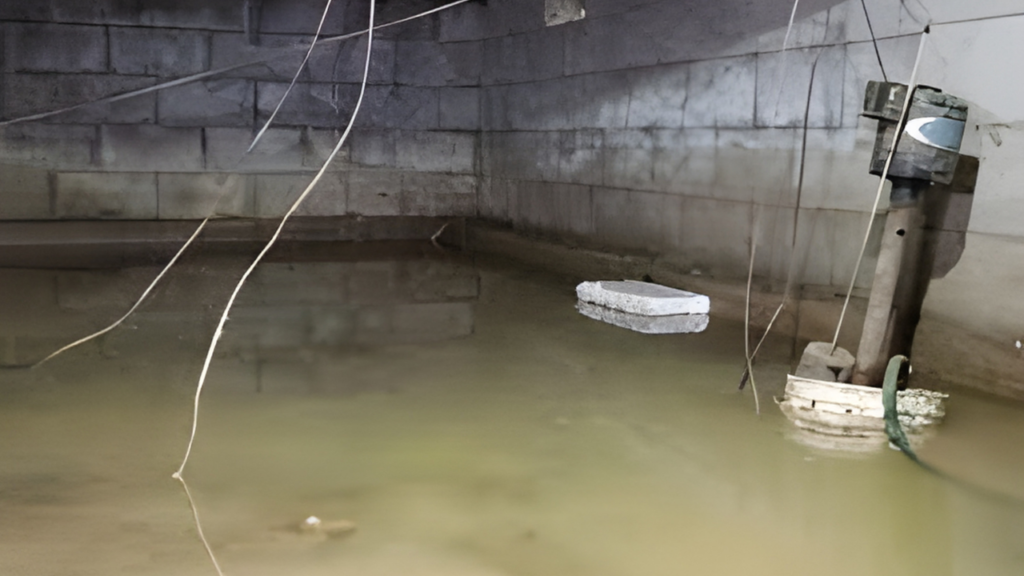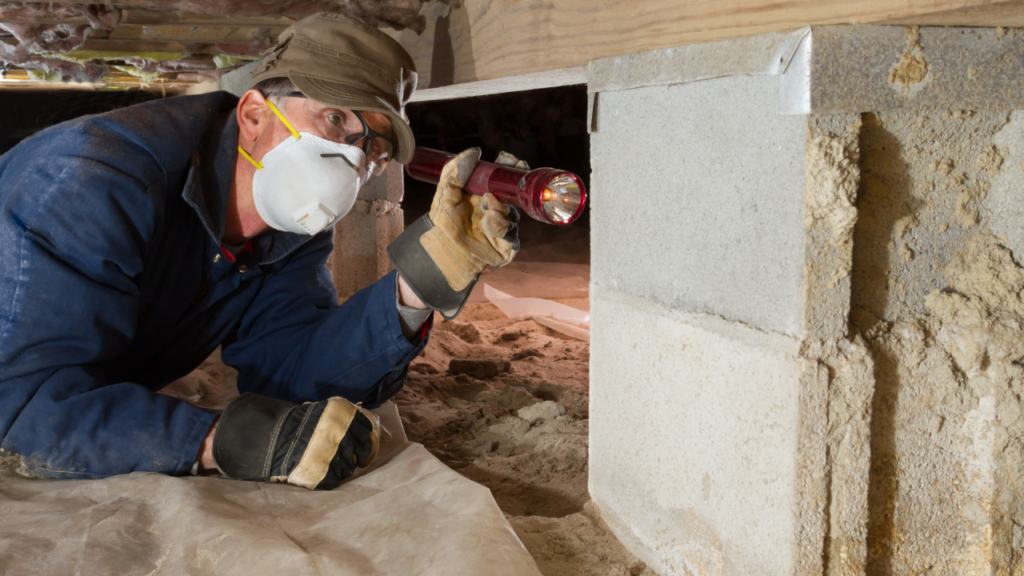
If you’ve found water in your crawl space, act quickly. Prolonged moisture breeds mold, damages framing, attracts pests, and can lead to costly structural problems. The good news: most crawl‑space water issues can be diagnosed and solved with a systematic plan—address exterior runoff, add drainage where needed, control humidity, then monitor. This guide explains what to do first, the common causes, and the permanent fixes that work in Greater Chattanooga.
Quick Diagnostic Checklist
- When does water show up—only after rain (surface runoff), seasonally (groundwater), constantly (a plumbing leak), or during humid spells (condensation)?
- Outside: Are gutters clogged, downspouts dumping near the foundation, or soil sloping toward the house?
- Inside the crawl: Standing water, damp soil, torn vapor barrier, sweating ducts/pipes, musty insulation?
- Indoors above: Cupped floors, musty smells, or higher humidity can indicate crawl‑space moisture.
- Photos help—document puddle locations, stained masonry, and wet insulation for later comparison.
Immediate Steps: What To Do Right Now
1) Make it safe. If water is deep or electrical components are present, switch off power to the area and avoid entry until safe.
2) Remove standing water. Use a submersible pump for bulk water, then a wet/dry vacuum for remaining puddles; discharge well away from the house so it doesn’t flow back.
3) Dry the space. Run fans and a crawl‑space‑rated dehumidifier until wood and soil surfaces are dry to the touch; replace any saturated fiberglass insulation that has slumped.
4) Inspect and document. Trace water paths from walls or pipe penetrations; note any dripping plumbing or sweating ducts.
5) Plan next steps. Exterior water management comes first; drainage and humidity control follow.
Why Crawl Spaces Get Wet (Root Causes)
- Roof water & surface runof
Clogged gutters, short downspouts, or negative grading push rainwater toward the foundation where it seeps through vents or joints. First‑line fixes: clean gutters, extend downspouts 6–10 feet, add splash blocks or solid drain piping, and regrade soil to slope away.
- Groundwater & hydrostatic pressure
In some soils or seasons, subsurface water rises and enters along walls or through the floor. The reliable remedy is an interior perimeter drain tile tied to a sump pump; consider exterior French drains if grading can’t be corrected.
- Plumbing leaks
Leaking supply, waste, or HVAC condensate lines can dump water directly into the crawl. Trace stains back to fixtures above and repair plumbing before moisture‑control work.
- Condensation / humidity
Warm, moist air hitting cold ductwork, pipes, or rim joists condenses and “rains” into the crawl—especially in vented spaces during summer. Air‑seal rim joists, insulate ducts, and maintain controlled humidity after bulk water is addressed.
Permanent Fixes That Stop the Cycle
1) Exterior water management (always start here)
- Clean/repair gutters 2–4×/year.
- Add 6–10 ft downspout extensions and splash blocks; consider buried discharge piping.
- Regrade soil for positive slope; redirect driveway/patio runoff away from the house.
2) Drainage + pumping
- Install interior drain tile along the footing, feeding a sump basin placed at the true low spot.
- Use a sump pump with a check valve and a battery backup; test operation before storm season.
- Discharge far from the foundation; avoid sending water back near downspout outlets.
3) Vapor barrier (ground cover) & air sealing
- Install durable polyethylene ground cover (≥6‑mil; 10–20‑mil for heavy traffic). Overlap seams ~12″, tape them, and turn the liner up walls 6–12″.
- Seal large air gaps at rim joists and around penetrations to limit humid air entry.
4) Encapsulation & conditioning
- For chronically damp spaces, run a continuous liner on floor and walls, seal vents, insulate walls (not the floor above), and maintain 45–55% RH with a crawl‑space dehumidifier.
5) Special situations
- In mapped flood areas, add compliant flood openings per local code.
- In chronic saturation, pair exterior drainage improvements with interior drain tile for redundancy.

Local Help: When To Call a Pro
Call Mountain View Handyman Services if any of the following apply:
- Water returns after storms—even with clean gutters and long downspouts.
- Persistent standing water, musty odors, or visible mold.
- Sagging insulation/joists or cupped floors above the crawl.
- Evidence of groundwater intrusion or suspected structural movement.
- You’re in a flood‑risk area or need documentation for code/insurance.
What we do for homeowners in Greater Chattanooga (Chattanooga, Ooltewah, Brainerd, East Ridge, Red Bank, Signal Mountain, Hixson, Collegedale, Lookout Mountain, Ridgeside, and Cleveland, TN)
- Diagnose the true source (runoff vs. groundwater vs. plumbing vs. condensation).
- Exterior fixes: gutter cleaning/repair, 6–10 ft downspout extensions, minor regrading.
- Interior drainage & pumping: perimeter drain tile + sump system with check valve and optional battery backup.
- Moisture control: install/replace vapor barriers (overlap + tape + wall turn‑ups), rim‑joist air‑sealing, and crawl‑space dehumidifiers.
- Encapsulation: continuous liners on floor and walls, sealed vents, controlled humidity.
- Follow‑up: moisture checks and seasonal maintenance so problems don’t return.
Call (423) 394-5656 or email info@mountainviewhandymanservices.com Mountain View Handyman Service. Service area: Chattanooga, Ooltewah, Brainerd, East Ridge, Red Bank, Signal Mountain, Hixson, Collegedale, Lookout Mountain, Ridgeside, and Cleveland, TN.

Glen Anderson
Glen Anderson, founder of Mountain View Handyman Services, brings over 20 years of trusted home repair and maintenance experience to Chattanooga homeowners


